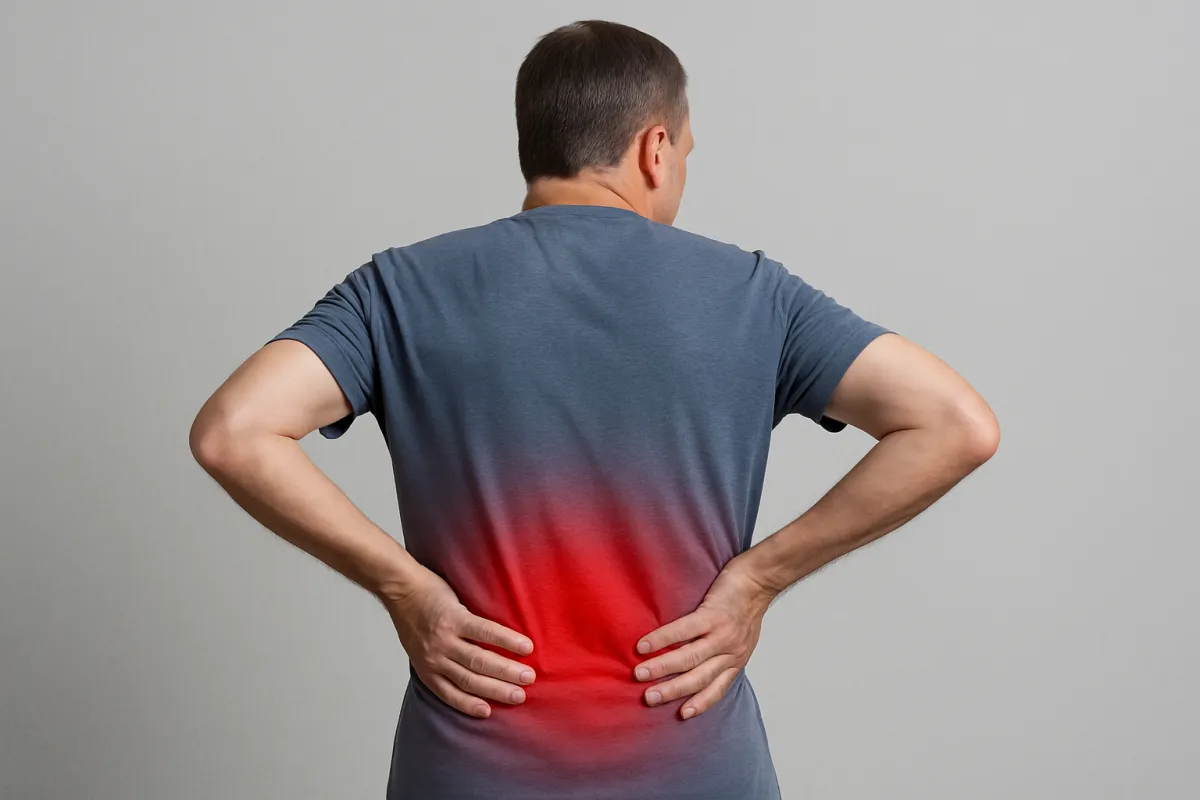
Failed Back Surgery Syndrome: The Largest Cause Most Doctors Miss
Back surgery is often presented as the “last resort” solution for chronic back pain. Yet up to 20–40% of patients who undergo spine surgery end up with what’s called Failed Back Surgery Syndrome (FBSS)—meaning the back pain doesn’t go away, or sometimes gets even worse.
I saw this countless times in my practice. Patients went through invasive surgery, long recoveries, and high hopes—only to be told afterwards that their pain was “just something they had to live with.”
But here’s what most doctors don’t tell you:
👉 A huge number of these failures come not from the spine itself—but from misaligned sacroiliac (SI) joints.
And that’s something that can be corrected—without ever needing surgery.
Why Back Surgery Doesn’t Always Work
Most surgeries for back pain focus on the spine—removing a piece of disc, fusing vertebrae, or decompressing nerves.
But if the pain source isn’t actually in the spine, then surgery won’t fix it.
That’s exactly what happens in Failed Back Surgery Syndrome:
The spine may look “fixed” on a scan…
Yet the pain persists because the real problem—pelvic instability—was never addressed. In fact, the largest cause of Failed Back Surgery Syndrome is SI joint misalignment—a factor most doctors completely miss.
The Overlooked Culprit: Your SI Joints
Your sacroiliac joints (SI joints) connect the base of your spine (the sacrum) to your pelvis. They’re small, but powerful. When they’re stable, they support the weight of your upper body and keep your pelvis balanced.
But when they’re injured, misaligned, or unstable, they can trigger pain that looks just like spine problems. Symptoms often include:
Low back pain that lingers even after surgery
Pain that radiates into the buttocks, hips, or thighs
Discomfort with standing, sitting, or climbing stairs
A sense that “something’s off” in your pelvis or lower back
I saw many patients who came to me after failed surgery—and when we corrected the SI joints, their “incurable” back pain finally disappeared.
How Pelvic Misalignment Triggers Ongoing Pain
When SI joints slip out of alignment, it creates stress on the ligaments and muscles of your pelvis. That, in turn, irritates nearby nerves and keeps pain firing—regardless of what’s happening in your spine.
That’s why surgery can’t solve it. You could fuse the spine, remove discs, or decompress nerves… but as long as the pelvis remains unstable, the pain continues.
A Smarter, Simpler Approach
Here’s the 3-step method I taught my patients:
🔹 Step 1: Realign the Pelvis
Gentle targeted stretches can guide the SI joints back into position. Most people feel relief almost immediately.
🔹 Step 2: Support the SI Joints
A Pelvic Support Belt, worn low on the hips, stabilizes the SI joints so they stay in place. This stops the constant slipping and reduces irritation.
🔹 Step 3: Strengthen the Ligaments
If ligaments have been overstretched, they can’t hold the joints securely. Prolotherapy, a regenerative injection treatment, helps restore their strength and durability.
What About Relief Right Now?
While you’re healing, it helps to calm irritated nerves. I often recommend QR Cream—a topical cream I developed that uses mannitol (a natural sugar compound) to reduce nerve sensitivity just under the skin. Applied over the painful area, it can quiet nerve pain quickly.
Why This Matters
Too many people go through invasive surgery, months of recovery, and the heartbreak of Failed Back Surgery Syndrome—when the real solution may have been far simpler all along.
By focusing on pelvic alignment and SI joint stability, you can often resolve chronic back pain without surgery—and even after surgery has failed.
Let’s Recap:
✅ 20–40% of back surgeries result in Failed Back Surgery Syndrome
✅ Most FBSS pain comes from misaligned SI joints—not the spine
✅ Realignment, support, and regenerative care bring real relief
✅ Topical options like QR Cream can calm pain during recovery
✅ Surgery isn’t always the answer—sometimes the solution is much simpler
Want to Learn More Ways to Relieve Back Pain Naturally?
🎥 Register for my free webinar: Live Without Pain
I’ll share natural ways to heal your body—without drugs or surgery.
For step-by-step guidance, you can also check out my book: “Low Back Pain: 3 Steps to Relief in 2 Minutes.”
Wishing you freedom from pain and a return to true healing,
— Hélène Bertrand, MD (retired)
CLICK HERE TO RECEIVE LOW BACK PAIN RELIEF in 2 MINUTES!
Disclaimer: This content is for informational and educational purposes only and does not substitute professional medical advice, diagnosis, or treatment. Always consult your healthcare provider before starting any new treatment or making changes to your health regimen. Although Dr. Bertrand is a retired medical doctor, she is not practicing medicine or providing medical care through this website.
